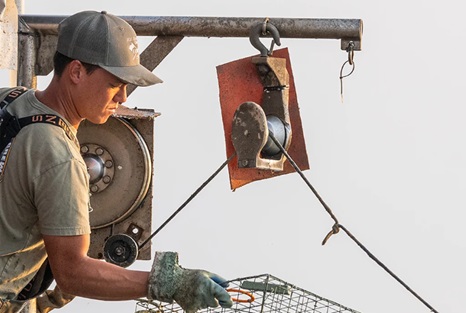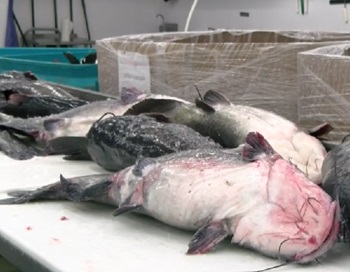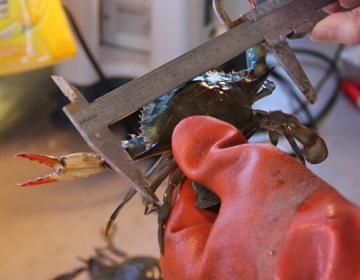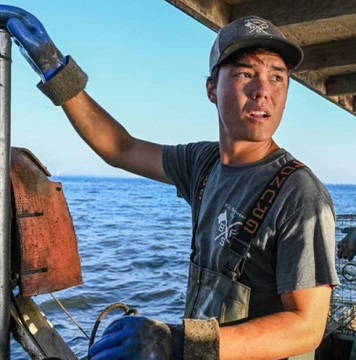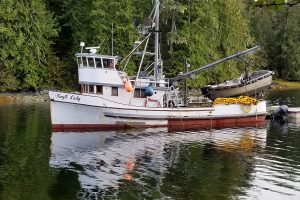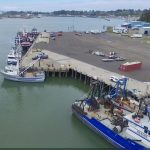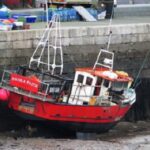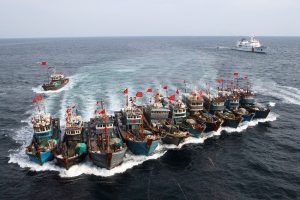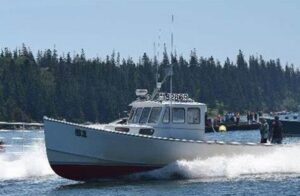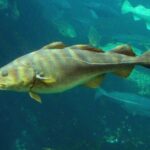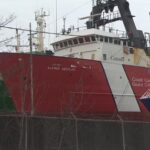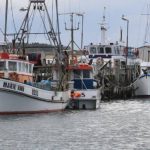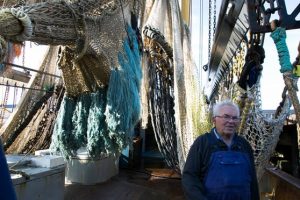Tag Archives: Chesapeake Bay
Maryland Catfish Trail hopes to control invasive species
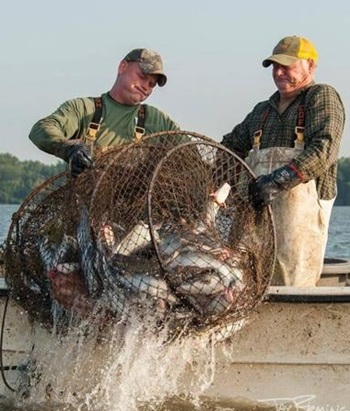 It’s early afternoon on a comfortable Sunday when Keith Bradfield and his brother Ray pull up to the Smallwood State Park dock after a long day of fishing. And they’ve been successful. Very successful. The Fairfax, Va., resident pulls up the lid of the cooler to reveal it stuffed with invasive blue catfish up to about 30 pounds each. Bradfield, who shows an image of his sonar lit up like a Christmas tree signifying the invasive species, said he looks for the fish in the deepest holes of the river, “but they’re pretty much everywhere.” And the blue catfish’s population has become such a problem that the state recently initiated a Maryland Catfish Trail where anglers can target fellow invasive flathead catfish and snakeheads in an attempt to help lower their numbers. Photos, more, >>CLICK TO READ<< 06:39
It’s early afternoon on a comfortable Sunday when Keith Bradfield and his brother Ray pull up to the Smallwood State Park dock after a long day of fishing. And they’ve been successful. Very successful. The Fairfax, Va., resident pulls up the lid of the cooler to reveal it stuffed with invasive blue catfish up to about 30 pounds each. Bradfield, who shows an image of his sonar lit up like a Christmas tree signifying the invasive species, said he looks for the fish in the deepest holes of the river, “but they’re pretty much everywhere.” And the blue catfish’s population has become such a problem that the state recently initiated a Maryland Catfish Trail where anglers can target fellow invasive flathead catfish and snakeheads in an attempt to help lower their numbers. Photos, more, >>CLICK TO READ<< 06:39
Lawsuit alleges Cooke Aquaculture using shell companies to skirt U.S. law
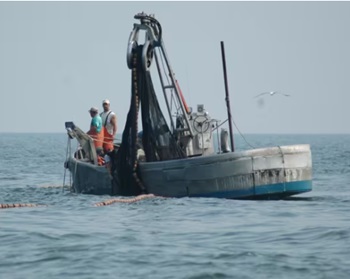 Cooke Aquaculture, one of New Brunswick’s largest companies, has asked for dismissal of a U.S. lawsuit accusing it of using a complex web of shell companies to break anti-foreign ownership laws. Saint John-based Cooke Aquaculture has owned Omega Protein, in Virginia, since 2017. Omega is affiliated with another company that operates a Chesapeake Bay menhaden fishery, a small baitfish used to make fishmeal, fish oil and other products. The menhaden fishery under Omega has concerned environmental activists, who say the company is overfishing a fish that many species up the food chain depend on in the Chesapeake Bay, which is slightly smaller than the Bay of Fundy. The lawsuit alleges Cooke is violating the American Fisheries Act, which requires 75 per cent of a company fishing in the U.S. to be owned by a U.S. citizen. more, >>CLICK TO READ<< 07:35
Cooke Aquaculture, one of New Brunswick’s largest companies, has asked for dismissal of a U.S. lawsuit accusing it of using a complex web of shell companies to break anti-foreign ownership laws. Saint John-based Cooke Aquaculture has owned Omega Protein, in Virginia, since 2017. Omega is affiliated with another company that operates a Chesapeake Bay menhaden fishery, a small baitfish used to make fishmeal, fish oil and other products. The menhaden fishery under Omega has concerned environmental activists, who say the company is overfishing a fish that many species up the food chain depend on in the Chesapeake Bay, which is slightly smaller than the Bay of Fundy. The lawsuit alleges Cooke is violating the American Fisheries Act, which requires 75 per cent of a company fishing in the U.S. to be owned by a U.S. citizen. more, >>CLICK TO READ<< 07:35
Gone Shrimpin’: MD, VA Shrimp Harvests Return For 2024 Season
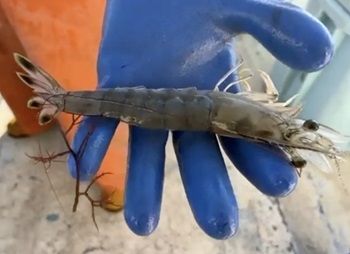 In the movie Forrest Gump, Alabama native Bubba proclaims, “Shrimp is the fruit of the sea.” Indeed, the south has long been known for its shrimp harvests, but the Chesapeake Bay? Not so much. In recent years, that’s been changing. Shrimp appear to be more abundant further north along the Atlantic coast. Virginia experimented with commercial shrimping for four years, saw success, and has had a commercial shrimp fishery for the last two years. Maryland forged ahead with its own pilot program in 2023, beginning with just one waterman. The 2024 pilot program is open to applicants now. A permit allows a commercial fisherman to use a 16-foot beam trawl to fish Maryland state waters of the Atlantic Ocean (extending out to three nautical miles). You can see the single permit holder, Sonny Gwin, in action on his first day fishing in 2023. Video, more, >>CLICK TO READ<< 07:02
In the movie Forrest Gump, Alabama native Bubba proclaims, “Shrimp is the fruit of the sea.” Indeed, the south has long been known for its shrimp harvests, but the Chesapeake Bay? Not so much. In recent years, that’s been changing. Shrimp appear to be more abundant further north along the Atlantic coast. Virginia experimented with commercial shrimping for four years, saw success, and has had a commercial shrimp fishery for the last two years. Maryland forged ahead with its own pilot program in 2023, beginning with just one waterman. The 2024 pilot program is open to applicants now. A permit allows a commercial fisherman to use a 16-foot beam trawl to fish Maryland state waters of the Atlantic Ocean (extending out to three nautical miles). You can see the single permit holder, Sonny Gwin, in action on his first day fishing in 2023. Video, more, >>CLICK TO READ<< 07:02
Lesion-Causing Disease in Chesapeake Bay Bait Fish Alarms Watermen
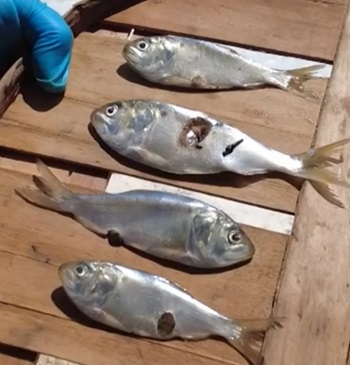 The disease, characterized by ulcers and lesions, is affecting menhaden, acrucial bait fish. Commercial crabber CJ Canby reports seeing dead menhaden floating in the bay on a weekly basis. “Last year, we had a 5-gallon bucket of menhaden, and 3 or 4 out of them had lesions. The other day, we cast-netted 23 fish, and 4 of them had lesions. So, the rate of lesions in menhaden has astronomically increased,” said Captain CJ Canby of the FV Miss Paula. Canby emphasizes the seriousness of the issue for watermen. “The fish are telling us there’s a problem, and it’s showing. more, >>CLICK TO READ<< 09:46
The disease, characterized by ulcers and lesions, is affecting menhaden, acrucial bait fish. Commercial crabber CJ Canby reports seeing dead menhaden floating in the bay on a weekly basis. “Last year, we had a 5-gallon bucket of menhaden, and 3 or 4 out of them had lesions. The other day, we cast-netted 23 fish, and 4 of them had lesions. So, the rate of lesions in menhaden has astronomically increased,” said Captain CJ Canby of the FV Miss Paula. Canby emphasizes the seriousness of the issue for watermen. “The fish are telling us there’s a problem, and it’s showing. more, >>CLICK TO READ<< 09:46
Virginia Moves To End 16-Year Ban On Dredging For Crabs During Winter
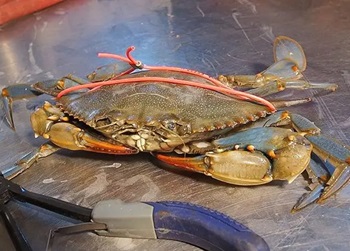 Virginia’s fishery managers have lifted the longstanding ban on dredging for blue crabs during the winter in the Chesapeake Bay, a seismic policy shift that drew strong criticism from their Maryland counterparts and conservationists. The Virginia Marine Resources Commission voted 5–4 on June 25 to repeal the 16-year prohibition on winter dredging. The board is expected to reconvene in September to consider staff recommendations on how to implement the fishery. The new season could open as early as this December. The board’s action came after the VMRC’s Crab Management Advisory Committee, which is mostly made up of industry members, voted 10–2 in favor of reopening the winter season. After that May 29 vote, the agency received 186 public comments on the proposal — all in opposition. more, >>CLICK TO READ<< 16:12
Virginia’s fishery managers have lifted the longstanding ban on dredging for blue crabs during the winter in the Chesapeake Bay, a seismic policy shift that drew strong criticism from their Maryland counterparts and conservationists. The Virginia Marine Resources Commission voted 5–4 on June 25 to repeal the 16-year prohibition on winter dredging. The board is expected to reconvene in September to consider staff recommendations on how to implement the fishery. The new season could open as early as this December. The board’s action came after the VMRC’s Crab Management Advisory Committee, which is mostly made up of industry members, voted 10–2 in favor of reopening the winter season. After that May 29 vote, the agency received 186 public comments on the proposal — all in opposition. more, >>CLICK TO READ<< 16:12
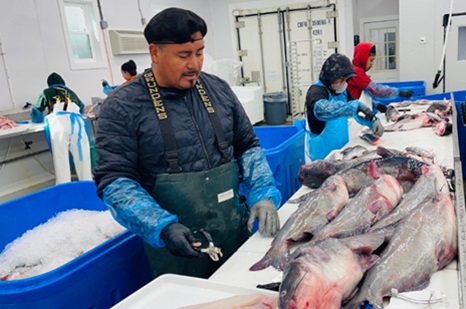
Wild-Caught Chesapeake Blue Catfish Phenomenon Booming: Thank Goodness
Buena Vista Seafood in San Francisco deals in high-end seafood from all around the world. European blue lobsters, Kambatia Reef Fish from Kenya, California Purple Urchins, and Icelandic Arctic Cod, to name a few. Now, the company has added wild-caught Chesapeake Blue Catfish to its list of offerings. “Chesapeake blue catfish check all the boxes,” says Polly Legendre,,, Legendre said the blue cats check the sustainability box because they’re an invasive species,” insanely prolific in terms of reproduction. Targeting them for harvest will help ease the toll they’re taking on the rockfish and blue crab populations, both iconic value species that have built the Chesapeake reputation. Tilghman Island Seafood’s processing capacity and dedication to quality control give their filets a long shelf life and are the reason we can get them from the East Coast to the West Coast in great condition. So they’re a sustainable and reliable fishery. more, >>CLICK TO READ<< 11:16
Why retired officer says Marine Police guarding the Chesapeake Bay are being ‘wasteful’
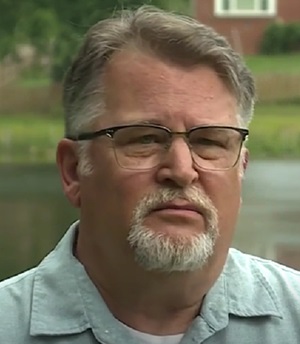 Andrew Cortez cares deeply about the Chesapeake Bay. “The Chesapeake Bay is our natural heritage,” Cortez said. “A healthy bay helps everyone.” The retired law enforcement officer was an investigator for 36 years, working to keep the Chesapeake in check with different agencies as a special agent with U.S. Fish and Wildlife. He now has concerns about the group meant to do just that: the Virginia Marine Resources Commission, which oversees Virginia Marine Police. “One of the things that really struck me is the amount of money they’re spending on what I would consider to be toys, unnecessary squandering of public money,” Cortez said. Photos, video, more, >>CLICK TO READ<< 07:38
Andrew Cortez cares deeply about the Chesapeake Bay. “The Chesapeake Bay is our natural heritage,” Cortez said. “A healthy bay helps everyone.” The retired law enforcement officer was an investigator for 36 years, working to keep the Chesapeake in check with different agencies as a special agent with U.S. Fish and Wildlife. He now has concerns about the group meant to do just that: the Virginia Marine Resources Commission, which oversees Virginia Marine Police. “One of the things that really struck me is the amount of money they’re spending on what I would consider to be toys, unnecessary squandering of public money,” Cortez said. Photos, video, more, >>CLICK TO READ<< 07:38
Virginia’s blue crab commercial harvest period extended
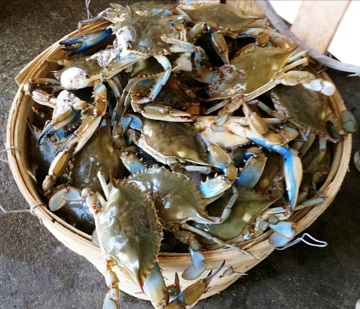 The Virginia Marine Resources Commission voted last week to approve the extension recommended by the Crab Management Advisory Committee. The harvest of crabs by hard crab pot is now Dec. 16, pushed back from Nov. 30. Lower bushel limits will begin Nov. 1 instead of Oct. 1. The purpose of these changes is to promote efficient utilization of blue crabs and economic stability for the fishing industry, according to the Marine Resources Commission. “Female crabs are not overfished, and overfishing is not occurring on them,” said Alexa Galván, a fisheries manager with the commission during a VRMC meeting. “But, the 2021 and 2022 exploitation rates were slightly above the target, not of the threshold which would be overfishing.” >>click to read<< 12:50
The Virginia Marine Resources Commission voted last week to approve the extension recommended by the Crab Management Advisory Committee. The harvest of crabs by hard crab pot is now Dec. 16, pushed back from Nov. 30. Lower bushel limits will begin Nov. 1 instead of Oct. 1. The purpose of these changes is to promote efficient utilization of blue crabs and economic stability for the fishing industry, according to the Marine Resources Commission. “Female crabs are not overfished, and overfishing is not occurring on them,” said Alexa Galván, a fisheries manager with the commission during a VRMC meeting. “But, the 2021 and 2022 exploitation rates were slightly above the target, not of the threshold which would be overfishing.” >>click to read<< 12:50
Skipjacks, oysters: The fight for survival of two Chesapeake Bay icons
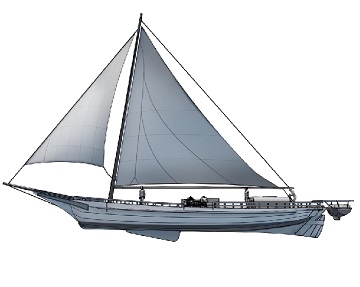 Starting Sunday, oyster enthusiasts will once again be free to pick up their rakes and tongs and harvest Maryland’s signature shellfish delicacy from the floor of the Chesapeake Bay and its tributaries.A month after the season begins, commercial oyster fisherman will take to the water to get their own haul. But one boat will stand out among from the rest: the skipjack, a nimble oyster-dredging sailboat that represents the state’s long maritime tradition. “The oysters are looking better. I’m optimistic,” said Shawn Ridgley, a veteran oysterman and skipjack captain who currently gathers data for the Maryland Department of Natural Resources. A typical skipjack carries a crew of five and can legally harvest 100 bushels of oysters a day. Lately, “boats are catching their limit by 10:00, 10:30 in the morning,” Ridgley said. >>click to read<< 14:05
Starting Sunday, oyster enthusiasts will once again be free to pick up their rakes and tongs and harvest Maryland’s signature shellfish delicacy from the floor of the Chesapeake Bay and its tributaries.A month after the season begins, commercial oyster fisherman will take to the water to get their own haul. But one boat will stand out among from the rest: the skipjack, a nimble oyster-dredging sailboat that represents the state’s long maritime tradition. “The oysters are looking better. I’m optimistic,” said Shawn Ridgley, a veteran oysterman and skipjack captain who currently gathers data for the Maryland Department of Natural Resources. A typical skipjack carries a crew of five and can legally harvest 100 bushels of oysters a day. Lately, “boats are catching their limit by 10:00, 10:30 in the morning,” Ridgley said. >>click to read<< 14:05
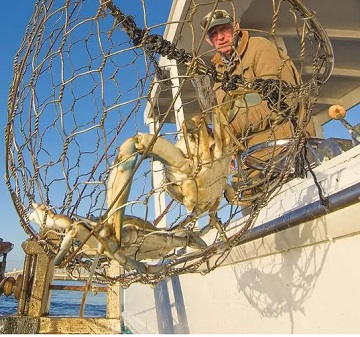
Reins Loosened Slightly On Chesapeake Bay Crab Harvest
“We’re being cautious, but I think we’re being responsible,” said Ed Tankard, a board member with the Virginia Marine Resources Commission, which voted June 27 to ease certain bushel limits. In Maryland, the state Department of Natural Resources announced on the same day a raft of industry-friendly changes to its crab controls, including modestly increasing the allowable harvest of female crabs and lifting limits on the harvest of males over Labor Day weekend. Those moves came a few weeks after the panel that regulates the Potomac River’s fishing industry agreed to roll back bushel limits on female crabs to 2021 levels. >click to read< 12:21
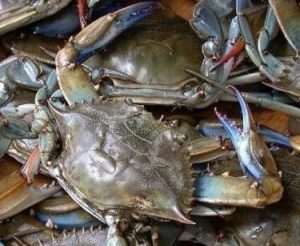
Chesapeake Bay blue crab population improves after all-time low in 2022
This year, the number of spawning age female crabs and adult male crabs both increased substantially, but the number of juvenile crabs only increased by about 15%, according to the winter dredge survey, which is completed from December to March by the Maryland Department of Natural Resources and the Virginia Institute of Marine Science. “We are encouraged by the increases in adult crab abundance, but we need to be vigilant given the ongoing low recruitment numbers,” said Lynn Fegley, acting director for Maryland Department of Natural Resources’s Fishing and Boating Services, in a statement. “We haven’t seen a strong year class since 2019 despite maintaining the spawning stock at a level capable of producing one.” Video, >click to read< 12:56

Maryland, Virginia race to save dwindling commercial fisheries in the Chesapeake Bay
Alarmed by plummeting stocks of commercial fisheries in the Chesapeake Bay, officials in Maryland and Virginia are scrambling to control invasive fish species that are causing at least part of the problem. On Thursday, Gov. Wes Moore asked the federal government to carry out an evaluation to determine if the situation amounts to a declaration of a “commercial fishery disaster,” which would qualify the state for federal assistance. In a letter to Secretary of Commerce Gina Raimondo, Moore said the state is increasingly concerned about the explosive growth of invasive fish species in the Chesapeake Bay, including blue catfish, flathead catfish and snakehead. >click to read< 09:11
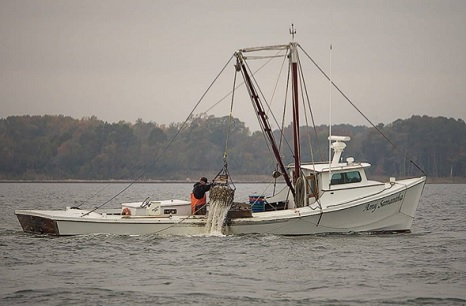
Extended Va. Oyster Season Poised for Largest Harvest In 35 Years
With Virginia watermen enjoying their most bountiful wild harvest in 35 years, state fisheries managers have agreed to extend the season by two weeks. The Virginia Marine Resources Commission (VMRC) voted unanimously to allow wild oyster harvests for an extra 10 working days in areas where commission staff judged the bivalve populations abundant enough to withstand additional fishing pressure. “We’ve had a great oyster season, and it’s still going strong,” said J.C. Hudgins, head of the Virginia Waterman’s Association. “It’s been good everywhere we go.” Looking back, it’s quite a turnaround. >click to read< 07:36
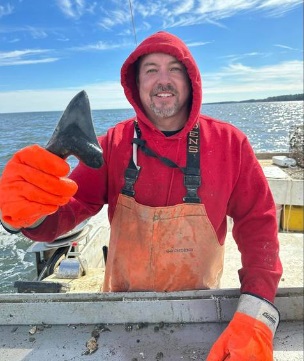
Fisherman finds huge megalodon tooth in oysters pulled from Maryland’s Chesapeake Bay
Another ancient shark tooth has been found along Maryland’s Chesapeake Bay, only this time it’s even bigger. The 5.5-inch megalodon tooth came out of the bay Feb. 10 hidden in a load of oysters, according to Stephen Rollins, captain of the fishing boat Undertaker. That makes the tooth about a half-inch longer than the one found Christmas Day by a 9-year-old girl at Maryland’s Calvert Cliffs State Park. >click to read< 21: 52
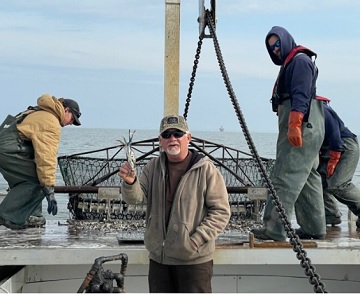
Here’s why workers are digging Chesapeake Bay blue crabs out of the mud this month
On a recent gray January morning, they were working a section of the upper Chesapeake Bay off Rock Hall on the Eastern Shore. Capt. Roger Morris, a Dorchester County waterman who works under contract with the state’s department of natural resources, dropped a Virginia dredge off the stern of F/V Mydra Ann, his 45-foot Bay workboat, and let the attached chain pay out until the dredge hit bottom 20-some feet below, jolting the boat. A Virginia dredge refers to an eight foot wide piece of equipment with an attached net that gets dropped into the water to dredge for crabs. Morris eased the throttle forward and dragged the dredge through the mud for one minute at three knots, then hauled it back up, pausing to rinse the mud out before bringing it on board. photos, >click to read< 19:08
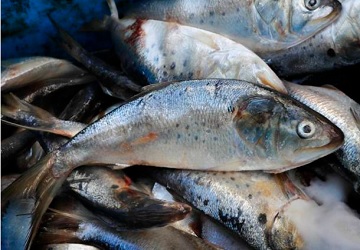
Virginia Regulators to Consider Changes to Menhaden Fishing Regulations
Virginia regulators will consider changes to commercial menhaden fishing in the Chesapeake Bay following requests from recreational anglers to put an end to the fishery. The proposals follow repeated requests from the Virginia Saltwater Sportfishing Association to stop menhaden fishing in the Bay, including a petition of 11,000 signatures that was presented to the office of Republican Gov. Glenn Youngkin earlier this year. Reedville-based Omega Protein, the lone player in the Bay’s menhaden reduction fishery, which processes catches into fishmeal or fish oil, says the new regulations take away available fishing grounds that include uninhabited areas. Taking operations completely out of the Bay into less safe conditions in the ocean would ultimately force the company to stop operating. >click to read< 11:51
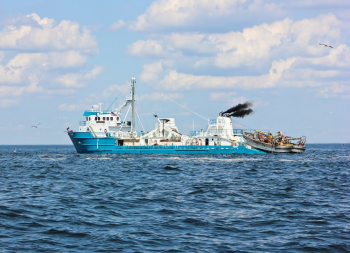
Menhaden Harvest Increase Approved as Anglers Petition to Close Bay Fishery
East Coast fishery managers have approved increasing commercial harvests of Atlantic menhaden from Maine to Florida. The Atlantic States Marine Fisheries Commission (ASMFC), which regulates near-shore harvests of migratory fish, voted Wednesday to set a new ceiling on the coastwide menhaden catch of 233,550 metric tons, a 20 percent increase over the current quota. The longstanding cap on harvest in the Chesapeake Bay remains unchanged, at 51,000 metric tons. But conservationists and sports anglers continue to worry about the impact to the Bay from large-scale fishing of menhaden near its mouth. >click to read< 13:54
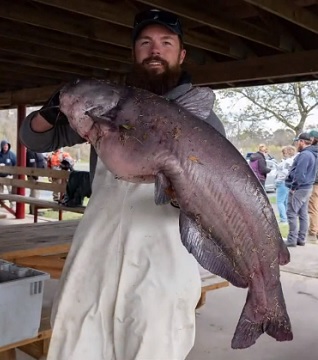
This invasive fish population is exploding as native Blue Crab populations hit record lows.
The invasive species in question is the blue catfish, a species so large it has become known as the “River Monster of the Potomac ” and other major Chesapeake Bay tributaries. The catfish’s diet includes native Blue Crabs. A November 2021 study from the Virginia Institute of Marine Science reports the catfish consumed as many as 2.3 million crabs per year from a study area in the lower James River. The first blue catfish were intentionally imported into the James River in Virginia during the 1980s. The species is native to the Mississippi valley. The fish are huge and consume almost any other species of wildlife they can encounter, catch and swallow, including crabs and other shellfish, Love said. Researchers have found the blue catfish will even eat ducks. >click to read< 07:59

Atlantic menhaden not overharvested, fisheries commission concludes
An updated menhaden population assessment that takes into account the ecological role of the species as a popular food for other fish deems the coastwide stock to be in good shape. The latest assessment, presented to the Atlantic States Marine Fisheries Commission Aug. 3, incorporates data collected through last year. It concluded that “overfishing is not occurring, and the stock is not considered overfished.” But even with the new methodology, the latest assessment concluded the overall stock was healthy, a finding immediately touted by the Menhaden Fisheries Coalition, a group representing commercial harvesters. >click to read< 10:26
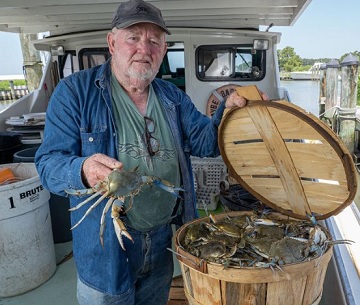
Decline in Chesapeake crab population sparks hunt for answers
Commercial crabbers in Maryland and Virginia aren’t catching their limits, and the harvest in the first few months of the season was so meager that some gave up trying. “Crabs are so scarce that me and my son are still catfishing,” Billy Rice, a Charles County, MD, waterman, said in June. “We’re making more money catfishing than we would be crabbing.” Based on what they see on the water, crabbers have no shortage of theories about why the Bay’s most prized catch is hard to find: Changes in water quality, climate change and an influx of crab-eating fish top the list. Whatever the case, said J. C. Hudgins, president of the Virginia Waterman’s Association. “Mother Nature has throwed a wrench in the barrel.” >click to read< 14:23

Maryland to restrict crabbing, including first-ever limits on harvest of male blue crab
Regulations issued this week, to be in effect from July through December, will limit commercial watermen to at most 15 bushels a day of male crabs in August and September. And the regulations will tighten existing restrictions on how many female crabs watermen can catch. The changes come weeks after an annual survey of Chesapeake blue crabs,,, That state fishery managers moved to limit even the harvest of male crabs demonstrates the gravity of the situation. Limits are typically only imposed on female crabs as a means of ensuring enough of them to survive to spawn, but with a more than 60% decline in the overall estimated blue crab population since 2019, scientists and representatives from the seafood industry are signaling that more protections are needed to help boost crab reproduction. >click to read< 16:02
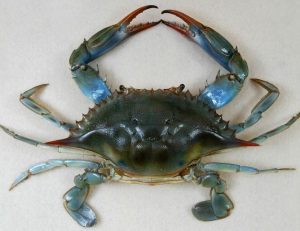
Chesapeake Bay blue crabs in trouble, tighter harvest restrictions loom
With the Chesapeake Bay’s crab population at its lowest ebb in more than 30 years, Maryland and Virginia are moving to curtail harvests in one of the region’s most valuable fisheries. Fisheries regulators in both states have proposed new catch restrictions, with plans to finalize them by the end of June. In Maryland, tighter limits for both commercial and recreational crabbing would take effect in July and for the first time would limit commercial harvests of male crabs, not just females. New commercial restrictions in Virginia would begin in October and continue until the crabbing season ends Nov. 30. >click to read< 08:17
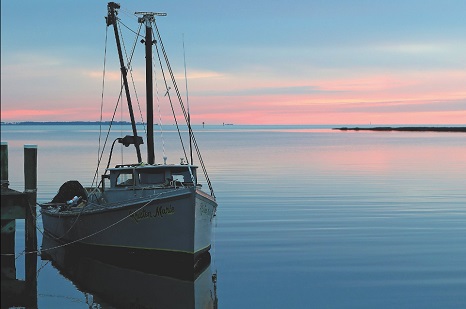
A Place Called Guinea – In Gloucester County, a centuries-old culture with its own dialect endures.
This place is where watermen weathered rugged conditions all day every day, fishing the rivers, dredging the oysters, and hauling in crab pots to harvest the seemingly endless bounty of the Chesapeake Bay. Smelling like fish, dismissive of their swollen hands and knuckles, these same men would later gather in a general store, you could find one on almost every corner, and swap stories over whose catch was the biggest. “Whoever was louder was the winner,” says fireman Nick Bonniville, whose father, grandfather, and a generation of great grandfathers all worked the Guinea waters. >click to read< 08:15

Gasoline, diesel prices put squeeze on Hampton Roads commercial fishing
“It’s going to get to a point where the customers won’t want to buy because it’s so outrageously expensive,” said Kyle Robbins. “Everyday it costs me about $150 to $200 just in fuel to leave the dock,” Robbins said. Six days a week, Robbins ventures out on a crabbing boat to haul in hundreds of pounds of crabs from the Chesapeake Bay. But the rising cost of fuel for those boats has caused his crabbing habits to change. “In certain times, maybe we can travel another 10 to 15 miles to catch more crabs, but we’re not wanting to spend the fuel, so we’re traveling only two to three miles,” he said. “It’s a lose-lose situation.” Video, >click to read< 08:15
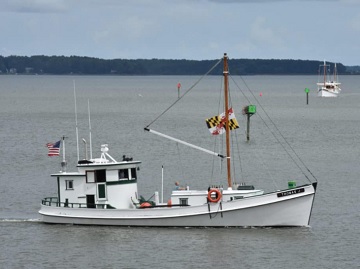
Going On Tour! Chesapeake Bay Buyboat History Comes to Life with 17th Annual Rendezvous
Skipjacks get all the glory, but there’s another hero of the Bay’s historic seafood industry worth celebrating: the buyboat. The era of Chesapeake Bay motor-powered buyboats started at the turn of the 20th century when gas and diesel engines powerful enough to push a boat the size of a Bay buyboat became affordable and available to the general public.,, Though most people recognize the term buyboat, it is somewhat misleading because buying and selling seafood was only a small part of the overall use of these boats. The Chesapeake Bay Buyboat Association will hold its 17th annual buyboat rendezvous from July 30- Aug. 8. The tour will start in Urbanna at the town-owned marina on Urbanna Creek from July 30-Aug. 1 and end on Aug 6-8 at Hudgins Horn Harbor Marina in Port Haywood. >click to read< 16:26

Half Male – Half Female Chesapeake Blue Crab
This crab, known as a bilateral gynandromorphism, is about 4.5 inches long and is estimated to be in its third year. It has both blue and red claws at the tip and an apron (lower abdomen) split in the middle. Typically, male gazami crabs have blue toes and a T-shaped apron, while females have a red tip and a wide apron. Gynandromorphic crabs have not been reported on the East Coast for at least 15 years. Gynandromorphism does not occur in mammals, but has been observed in lobsters, crabs, snakes, butterflies, bees, chickens and other birds. Video, >click to read< 10:19






